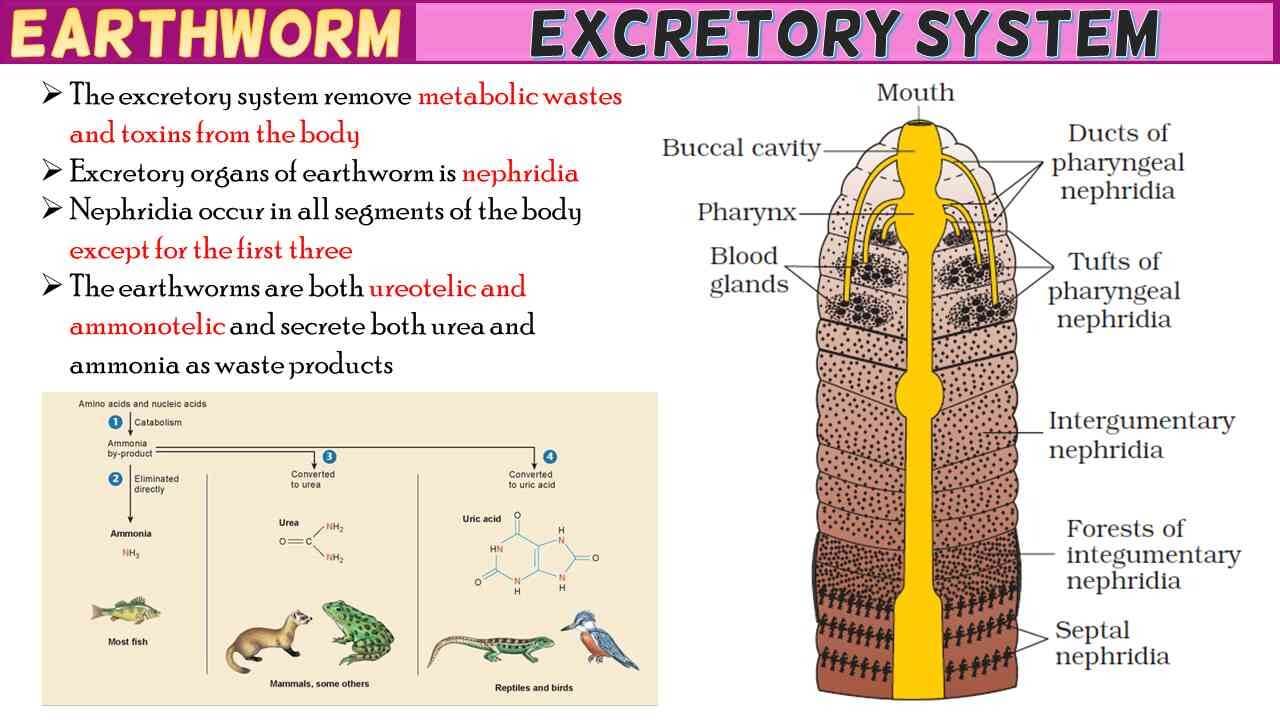Table of Contents
Earthworm Excretory System Short Notes
In this article we will discuss about the earthworm excretory system
Earthworm Excretory System
- The excretory system remove metabolic wastes and toxins from the body
- Excretory organs of earthworm is nephridia
- Nephridia occur in all segments of the body except for the first three
- The earthworms are both ureotelic and ammonotelic and secrete both urea and ammonia as waste products
Nephridia
- According to their position in the body, nephridia are of 3 types:- Septal Nephridia, Integumentary nephridia and Pharyngeal nephridia
1. Septal Nephridia
- They are well developed and the largest nephridia
- Found on inter segmental septa
- Starting from 15 segment all posterior septa have nephridia
- Each inter-segmental septum possess two rows of septal nephridia (80-100 on each septum)
- Septal nephridium has 4 parts: Nephrostome (nephridiostome or ciliated funnel), neck, body of nephridium and terminal duct
- Septal nephridia open into alimentary canal
- Alimentary canal absorbs water from excretory materials
Function of septal nephridia
- Septal nephridia discharge the waste products through canal and ducts into the lumen of the intestine. So they are enteronephric.
2. Integumentary nephridia
- Present on the internal surface of body wall
- Each segment has 200-250 nephridia
- In clitellar segments has 2000-2500 nephredia. They are known as forest of nephridia
- Each nephridium opens by a nephridiopore on the outer surface of the body wall directly.
Function of Integumentary nephridia
- They discharge nitrogenous metabolic waste products directly outside from the body through nephridiopores. So they are called exonephric nephridia.
3. Pharyngeal nephridia
- Present on 4,5,6 segment of alimentary canal
- Similar to septal nehridia in structure but they lack nephrostome
- Terminal ducts of each group unit to form a common duct
- Common ducts open into pharynx in 4 segment
Function of Pharyngeal nephridia
- They discharge the waste products directly into the buccal cavity and pharynx from where these are passed outside with undigested food through the anus. So they are called enteronephric nephridia.
You may also like: –
- Earthworm Morphology Short Notes
- Body Wall of Earthworm Short Notes
- Earthworm Digestive System Short Notes
- Earthworm Circulatory System Short Notes
- Earthworm Nervous System Short Notes
- Earthworm Excretory System Short Notes
- Earthworm Reproductive System Short Notes
For more detailed information about Structural Organisation in Animals, download now full study material as PDF and if you want to learn more detailed information about Structural Organisation in Animals, visit YouTube Channel.
